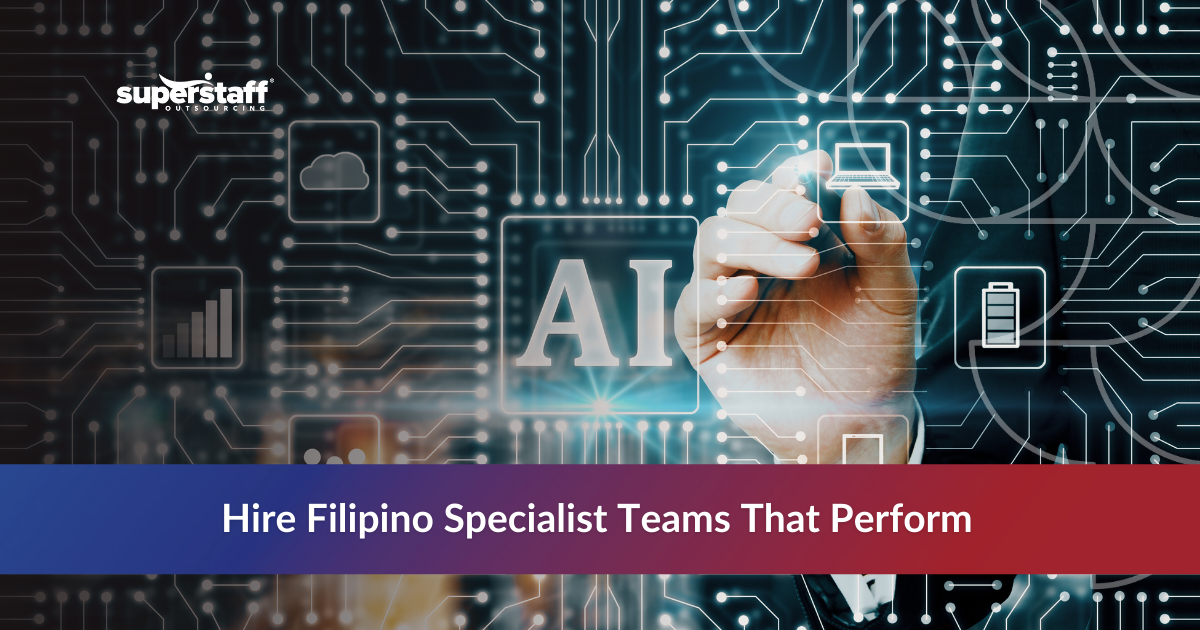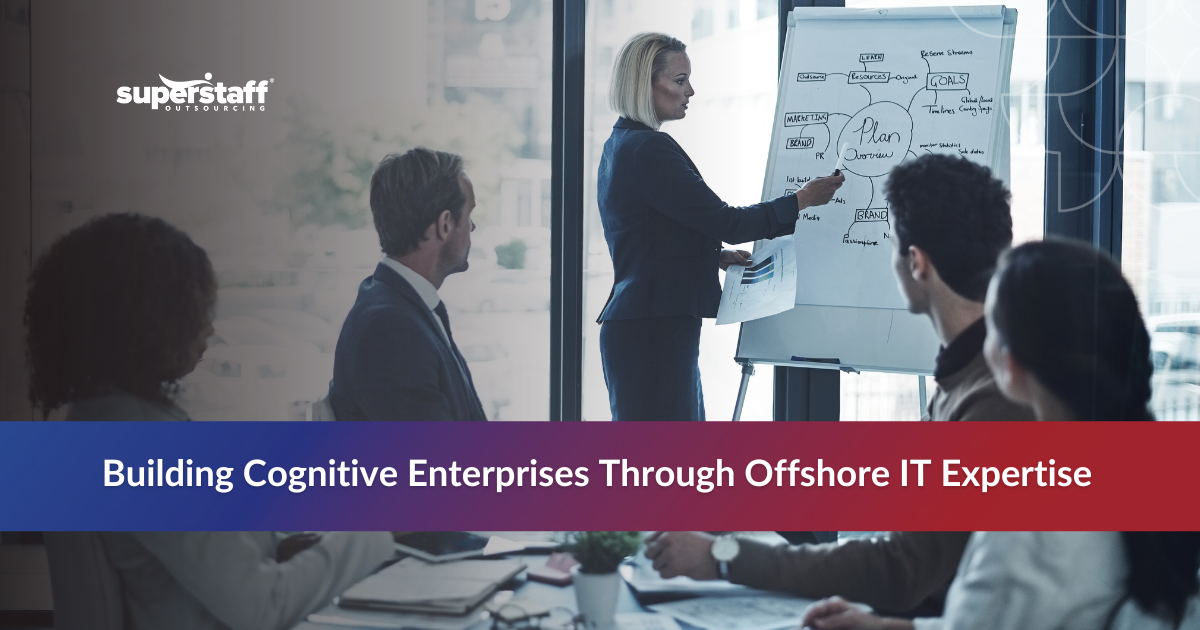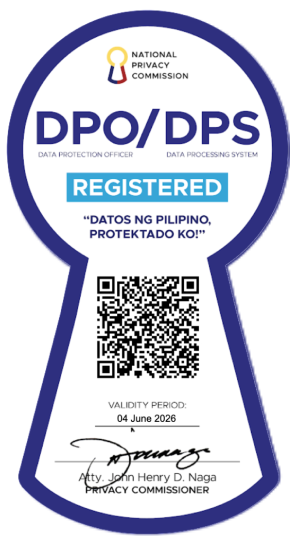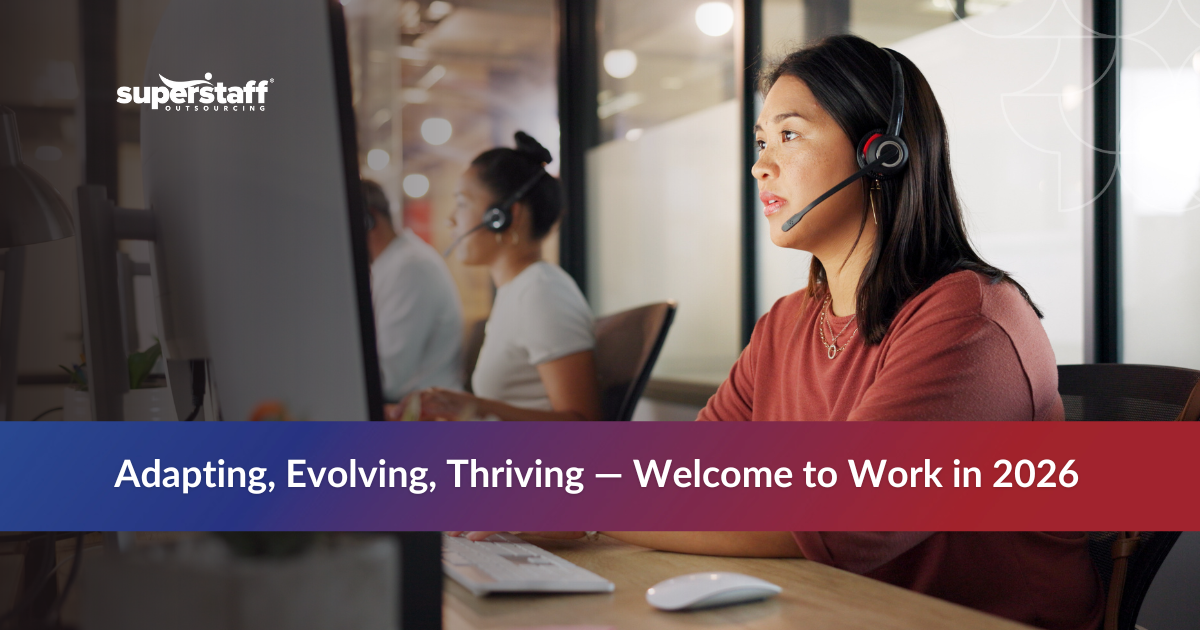
As the world steps into 2026, the workplace is evolving faster than ever. Artificial intelligence, shifting talent models and hybrid working arrangements are converging in ways that challenge traditional structures and open new opportunities.
This article explores the top workplace trends shaping the future of work 2026 and how leaders can prepare for a more adaptive, AI-driven, and people-first future. The purpose is to help business leaders, HR professionals, and decision-makers anticipate what’s next in the evolving world of work.
AI continues to redefine how work gets done, but the human element remains indispensable.
In the landscape of the future of work 2026, one of the most profound shifts is the role of AI. We’re transitioning from simply using automation to partnering with intelligent systems—yet the human element, with its nuance, creativity and emotional intelligence, remains vital.
Generative AI as a co-pilot in daily operations
With advances in generative models, businesses now deploy tools that do much more than routine tasks. They assist in drafting content, generating ideas, analysing data and even creating designs.
Many industry experts believe that generative AI will become firmly embedded in workflows across many larger organizations in 2026 and beyond. What this means for work is that machines become collaborators—not just tools. As a result, the narrative around technology shifts from replacement to augmentation.
Reskilling for AI collaboration, not competition
As these systems become commonplace, a central question emerges: how will people work with these systems? Rather than fearing the machines, the organisations that thrive will focus on how AI will change jobs in 2026—not only by eliminating tasks, but by changing – and creating – roles. The shift is toward roles where human judgement, emotional intelligence, context-setting and interpretation are essential.
Studies show that continuous upskilling will be a dominant factor in the future of work from 2026 onward. Workers will need skills in collaborating with AI, managing automated systems, interpreting AI outputs and ethically overseeing machine-driven decisions.
New governance models around ethical AI use
The deployment of AI in the workplace isn’t just a technical change—it triggers governance, ethics, transparency and trust concerns. As HR-and leadership-oriented trends show, AI has moved out of IT and into the boardroom. In the future of work 2026, organizations must put in place frameworks around AI: how data is used, how decisions are audited, how human oversight remains in place and how bias or unintended consequences are managed.
With AI changing job functions, organizations are rethinking how they define and measure talent.
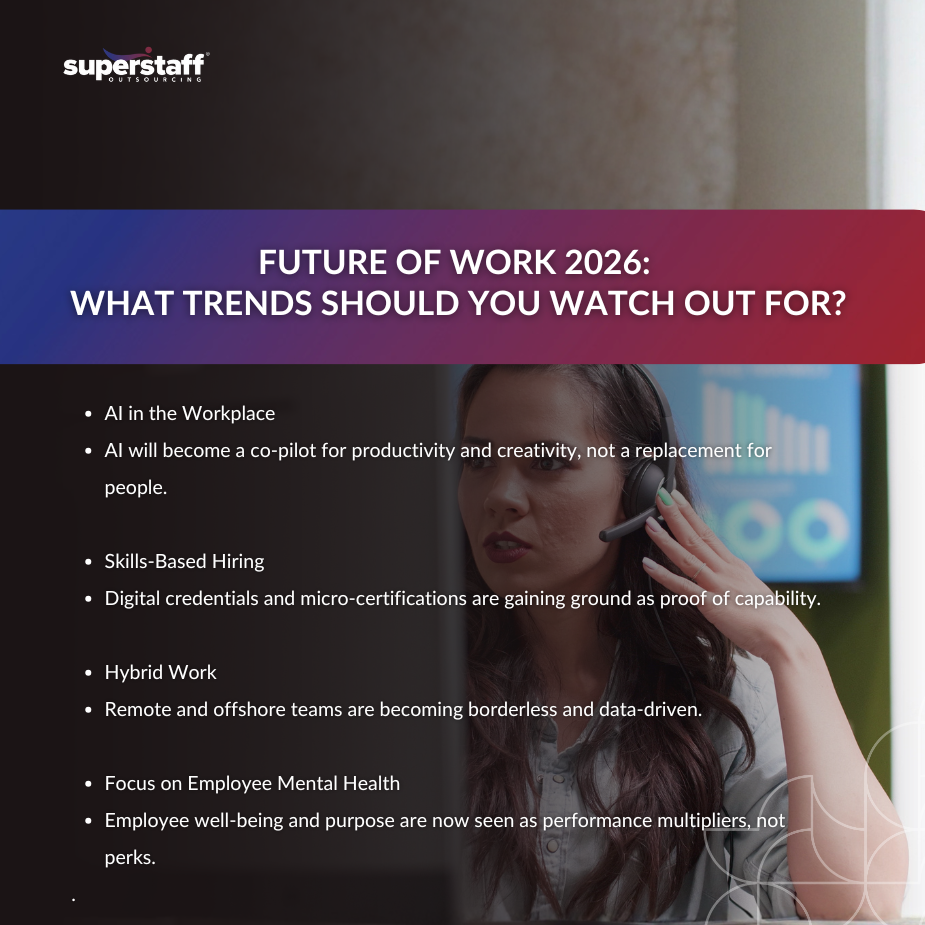
Skills-first hiring trends will dominate recruitment strategies in 2026.
In the future of work 2026, the war for talent continues—but the rules are changing. It’s no longer just about degrees or pedigree; it’s about what people can do. The rise of “skills-first hiring trends” is real.
Rise of digital credentials and micro-certifications
As more roles are defined in terms of tasks, outcomes and capabilities rather than fixed job titles, organizations are turning to digital credentials, micro-certifications and other forms of skills verification. These make capabilities visible and portable. Insights show that up-skilling and credentialization are core parts of workforce strategies for 2026.
Why skills visibility improves mobility and inclusivity
When hiring is based on skills rather than credentials or degrees, opportunities widen. This shift helps tap into broader talent pools—individuals who may not have traditional academic backgrounds but possess relevant skills. In doing so, organizations increase inclusivity, agility and innovation. Leaders who embrace skills-first hiring lay the groundwork for the future of work 2026 where capability-based models dominate.
Case examples of industries benefiting from skills-first systems
Industries such as tech, customer support, and digital services are already shifting toward skills-based hiring. For example, companies leveraging AI and automation are placing greater value on learning agility, adaptability, and cognitive flexibility—skills rather than static credentials. Studies show that HR functions are deeply engaged in reshaping talent processes in 2026.
As companies prioritize capabilities over credentials, they’re also re-imagining how teams collaborate.
Hybrid teams are evolving into more dynamic, borderless structures.
One of the most visible manifestations of the future of work 2026 is how and where work gets done. The earlier phase of hybrid (office/home) is maturing. Now, what we’re seeing is more dynamic, borderless team structures and future workplace trends: hybrid teams and automation playing in tandem.
Data-driven management of hybrid teams
In 2026, organizations are leveraging analytics and data to optimize how distributed teams perform. That might mean tracking collaboration patterns, leveraging AI insights on productivity or designing work-patterns responsive to real-time signals. Reports suggest hybrid work isn’t dead—it’s being optimized. The key is to avoid treating hybrid work as a fixed policy, instead focusing on outcomes: when, how and where people do their best work.
Collaboration tools powering distributed work
Remote, on-site and offshore talent are blended into teams, supported by collaboration platforms, virtual environments and asynchronous workflows. Automation supports routine coordination; humans bring creative, strategic, and relational work. Tools continue to evolve, enabling asynchronous global work, shared digital workspaces and near-instant cross-team collaboration—core features of the future of work 2026.
Time-zone and cultural alignment for global operations
As hybrid teams become borderless, the definition of the team changes. Organizations now combine on-site, remote and offshore talent, creating globally-distributed workflows. As one workforce trends report highlighted, hybrid work isn’t just home vs office; it’s a strategic mix across time zones and geographies. This requires rethinking everything from team communication norms to cultural alignment, leadership practices and performance metrics.
These changes are redefining not just where work happens, but what employees expect from it.
Employee well-being and purpose are becoming core performance drivers.
The conversation around the future of work 2026 is not just about technology and structure; it’s equally about people, energy and meaning. Employee well-being and purpose are no longer “nice-to-have”—they are strategic drivers of performance and retention.
Shift from “engagement” to “energy sustainability”
If engagement was once the mantra, in 2026 the focus shifts to energy: the sustainable capacity of employees to perform, collaborate and innovate without burnout. Research points to employee well-being as a central issue for talent strategy. Well-being metrics increasingly tie into performance and organizational health.
Well-being as part of performance metrics
Forward-looking organizations include well-being, work-life fit, resilience, and mental health as factors in their performance frameworks. This helps shift the culture from purely output-based to human-centric, recognizing that people bring their whole selves to work. In the future of work 2026, organizations that neglect the human side risk losing talent and productivity.
Purpose-driven cultures attracting top talent
Today’s workers – especially younger generations – are increasingly drawn to purpose. Companies that articulate mission, values and impact, and treat employees as stakeholders in more than just output, will lead in talent attraction and retention. The future workplace won’t just be measured by results—it will be shaped by meaning, belonging and growth.
The future workplace will demand a new type of leadership—empathetic, data-literate, and adaptable.
Leaders in 2026 must bridge technology and humanity.
As all the previous sections converge, it becomes clear that in the future of work 2026, leadership is being redefined. It is no longer sufficient to lead functions or manage operations; leaders must navigate the intersection of technology, talent and culture.
Decision-making with human judgment and machine insight
In an era of AI in the workplace, leaders must harness machine-driven insights while applying human judgement. The role of the leader is shifting: they must interpret AI outputs, translate them into strategic decisions, and ensure ethical, human-centered application. As highlighted, AI and flatter structures are reshaping leadership models.
Leading distributed teams with empathy
When teams are hybrid and distributed, and when automation handles more routine tasks, leadership shifts toward emotional intelligence, culture-building, connection and clarity. Leaders must build trust across remote and on-site, across different cultures and time zones. They must pay attention to how people feel, collaborate and grow—not just how they perform.
Continuous learning as a leadership competency
In the future of work 2026, leaders must themselves be lifelong learners. The pace of change, the integration of AI in the workplace, and the shift to skills-first hiring mean leaders who stagnate will fall behind. Organizations increasingly demand that their leadership develops digital literacy, adaptability, and agility—themselves modeling the behavior they expect of their teams.
To thrive amid these shifts, organizations must treat the future of work as a continuous design process.
The Future of Work 2026: Are You Ready for It?
The 2026 workplace is not just about adopting AI or flexible models—it’s about designing systems where technology amplifies human potential. Across the future of work 2026, we see how AI reshapes roles, how skills-first hiring redefines access, how hybrid teams enhance collaboration, and how empathy anchors leadership.
For business leaders, HR professionals and decision-makers, the call to action is clear: invest in lifelong learning, build a data-driven but human-centered culture, and choose leadership that adapts as fast as technology does. The future doesn’t simply happen—it’s created.
If you want to stay future-ready, begin today: review your talent strategy to prioritize skills over credentials, integrate AI-collaboration mindset into training programs, design team structures that are dynamic and borderless, and ensure your leadership is prepared to bridge technology and humanity.
Ready to make this happen? SuperStaff, a forward-thinking BPO, can be your strategic partner in navigating this transition.
Let’s shape the future of work 2026 together, and make it one where people and machines amplify each other, not compete. Get in touch with us today to get started!


